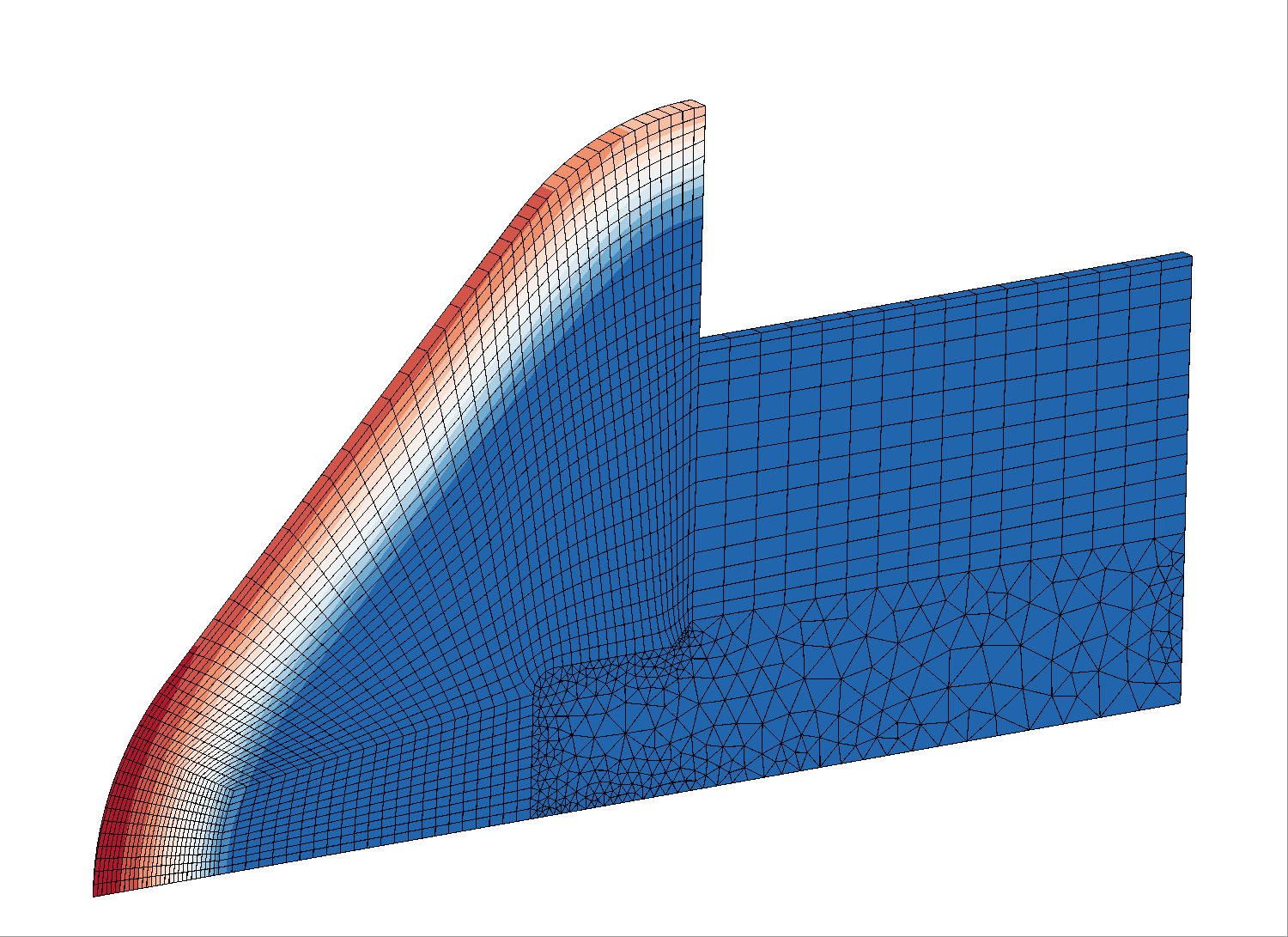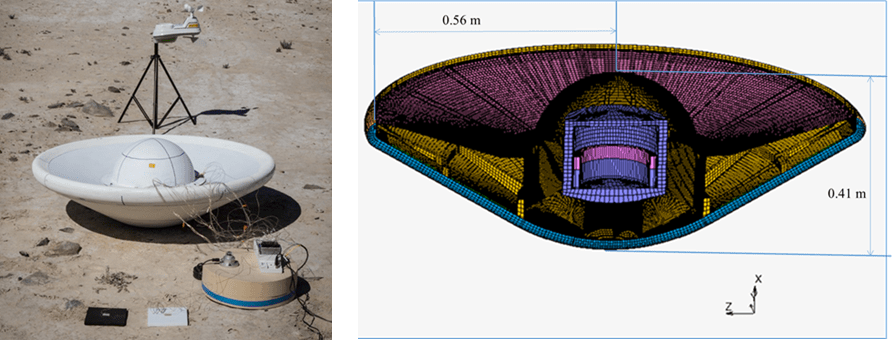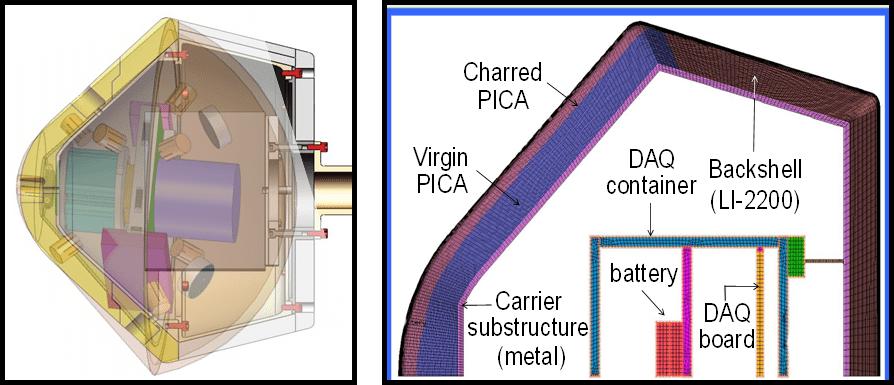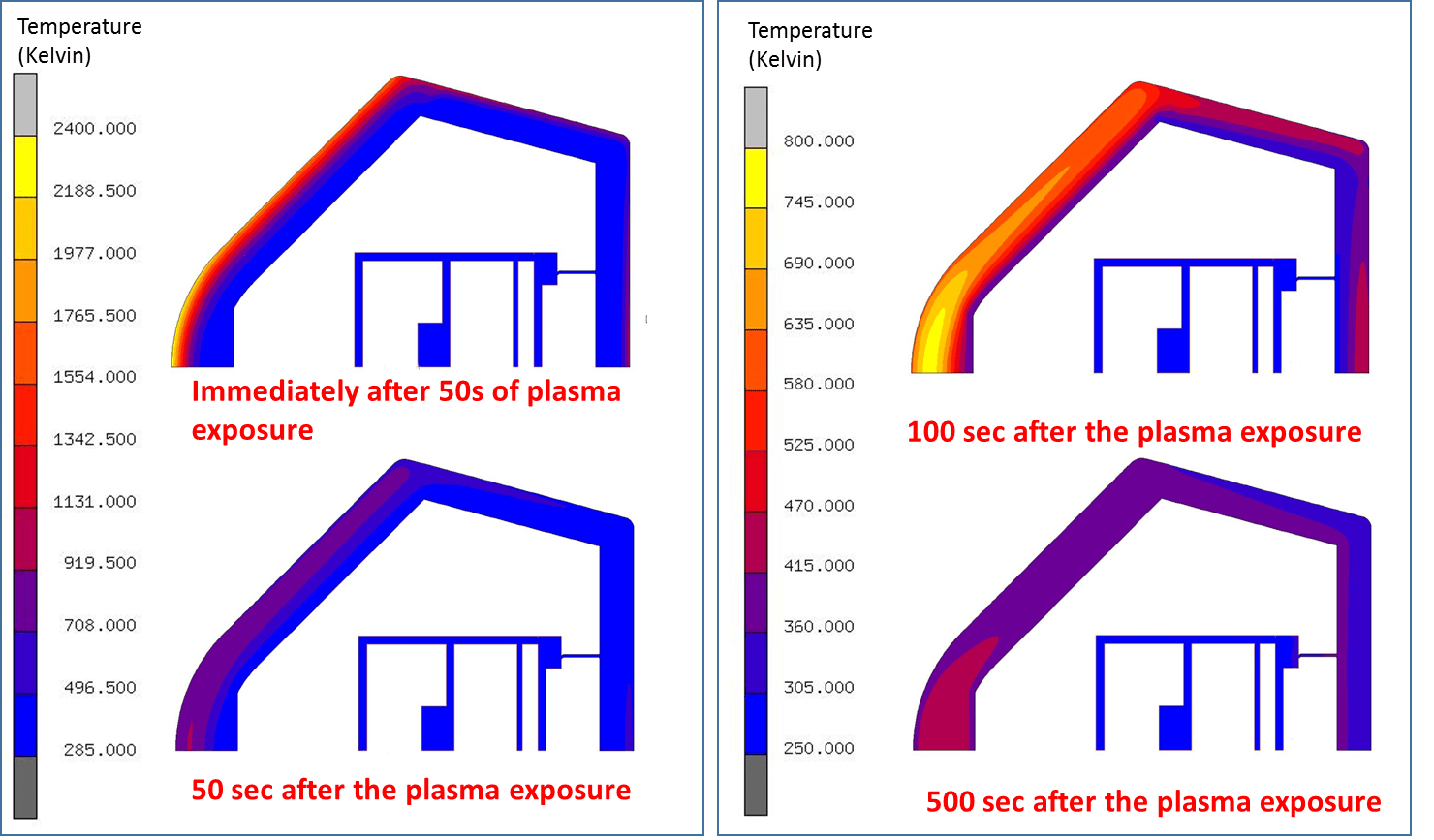Thermal Response
Hypersonic vehicles and planetary probes encounter extremely high temperatures during hypersonic passage through an atmosphere. The exterior thermal protection system (TPS) is designed to insulate the interior components of a spacecraft from the high temperature environment. Typically, the surface of the TPS material will vaporize or melt and the interior of the material may decompose whereby part of the solid is converted to gas.
Thermal response software is used to calculate both the surface and in-depth behavior of the TPS as a function of time for prescribed surface heating environments. The predicted quantities include temperature, density, surface mass loss, and gas flow owing to decomposition. The mass of the TPS is optimized by determining what minimum thickness is required not to exceed temperature limits at one or more interior locations.
The Thermal Protection Materials Branch at NASA Ames Research Center develops and maintains a family of thermal response tools. The Fully Implicit Ablation and Thermal-response code (FIAT) is widely used to calculate quantities in one dimension and is applicable for a large majority of cases. For situations where multidimensional heat conduction or internal gas flow are important, the Two-dimensional Implicit Thermal-response and AblatioN (TITAN) or 3dFIAT codes are used for two- or three-dimensional simulations, respectively. Icarus is the next-generation spacecraft TPS modeling tool under active development in the Branch. The solver is able to leverage modern high-performance computing (HPC) architectures and can utilize hybrid unstructured grids to enable large scale simulations of complex spacecraft TPS geometries. Developers of the Icarus code work closely with TPS technologists and aeroscientists to ensure that this solver meets the needs of next generation TPS materials and architectures, such as those (e.g. HEEET, ADEPT and 3D-MAT), under development in the Branch. When complete, the solver will be able to provide accurate simulations of full-scale heat shields and be able to be seamlessly coupled to modern hypersonic CFD solvers.
Click here for a link to the FIAT software.
Thermal-Structural Analysis
One of the core capabilities of the Thermal Protection Materials Branch is thermal-structural modeling of heat shield materials and systems. Simulations are performed using various commercial finite-element software including MSC MARC, MENTAT, NASTRAN and PATRAN. MSC MARC supports fully transient, non-linear, thermal, and coupled thermal-structural finite element analysis. Non-linear and temperature dependent material properties can be incorporated inside the finite element model. The package allows the application of a wide range of thermal-structural boundary conditions.
Coupled thermal-structural simulations are used to predict stress, strain, and temperature distribution inside a heat shield as well as the interior of an entry probe or other entry vehicles. These analyses are also used for assisting the design and loading environment of ground test models. The data from thermocouples and strain gages are used to compare the model predictions and validate the models.
In the past, thermal-structural analysis has been used to size heat shield tiles for the Orion Crew Module and to predict stresses in compression pad and other critical components of the Orion heat shield. Thermal soak analyses have also been performed to predict peak payload temperatures of an Earth entry vehicle that may bring back samples from comets and planets such as Mars.
Thermal Protection Material Sizing
The Thermal Protection Materials Branch uses thermal response software such as FIAT to calculate both the surface and in-depth behavior of the thermal protection system (TPS) as a function of time for a prescribed surface heating environment. The predicted quantities include the in-depth temperature distribution vs time. If maximum allowed temperatures are assigned to the subsurface materials, then thermal analyses may be iterated to find the sizing, or minimum thickness, of TPS required not to exceed these temperature limits. In practice, this exercise is performed with environments at multiple locations on heat shields (such as stagnation point with laminar flow and near the shoulder with turbulent flow) and for limiting entry trajectories (such as maximum heat load and maximum heat flux) to ensure that the sizing is sufficiently thick for all cases.
































